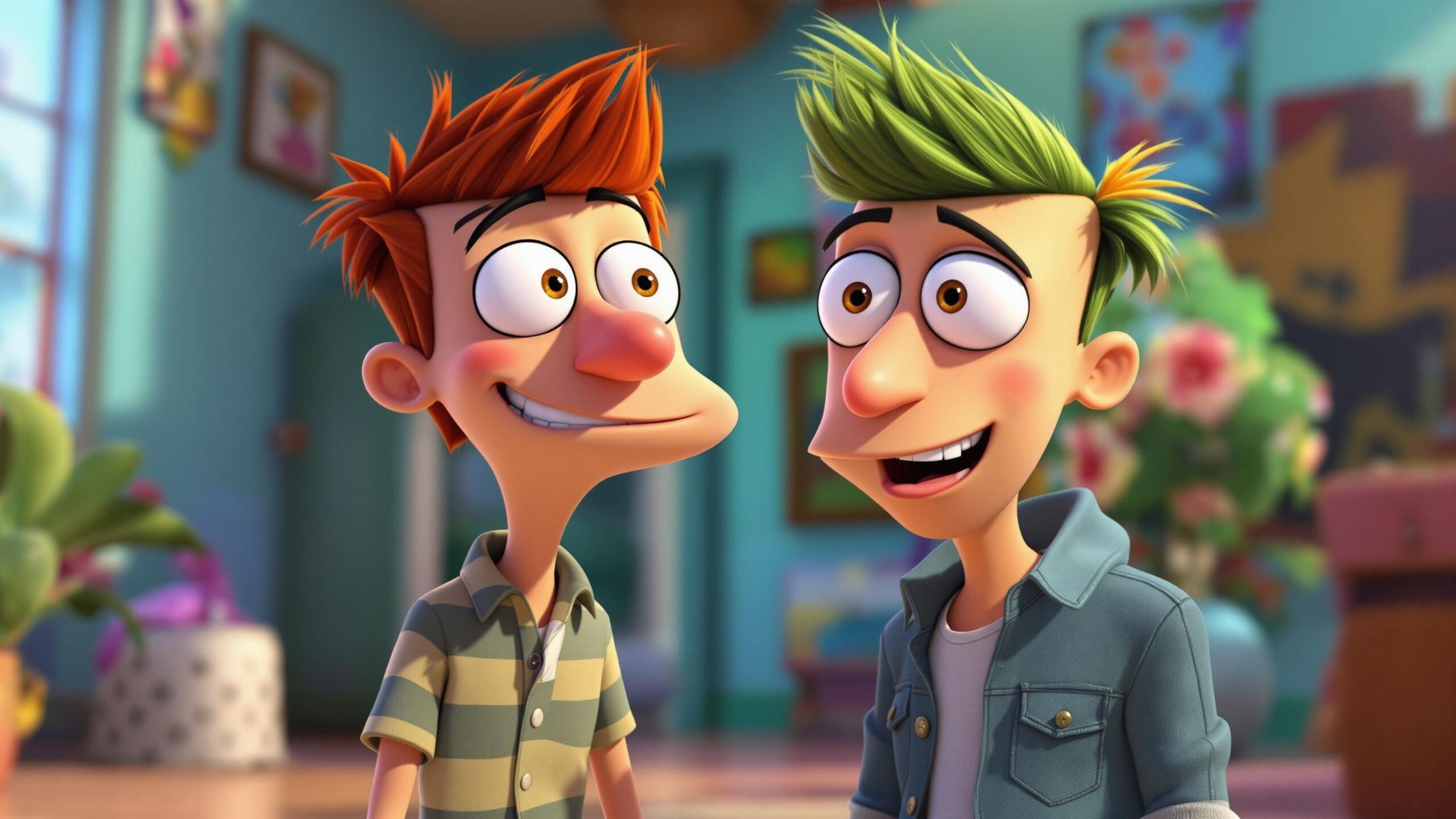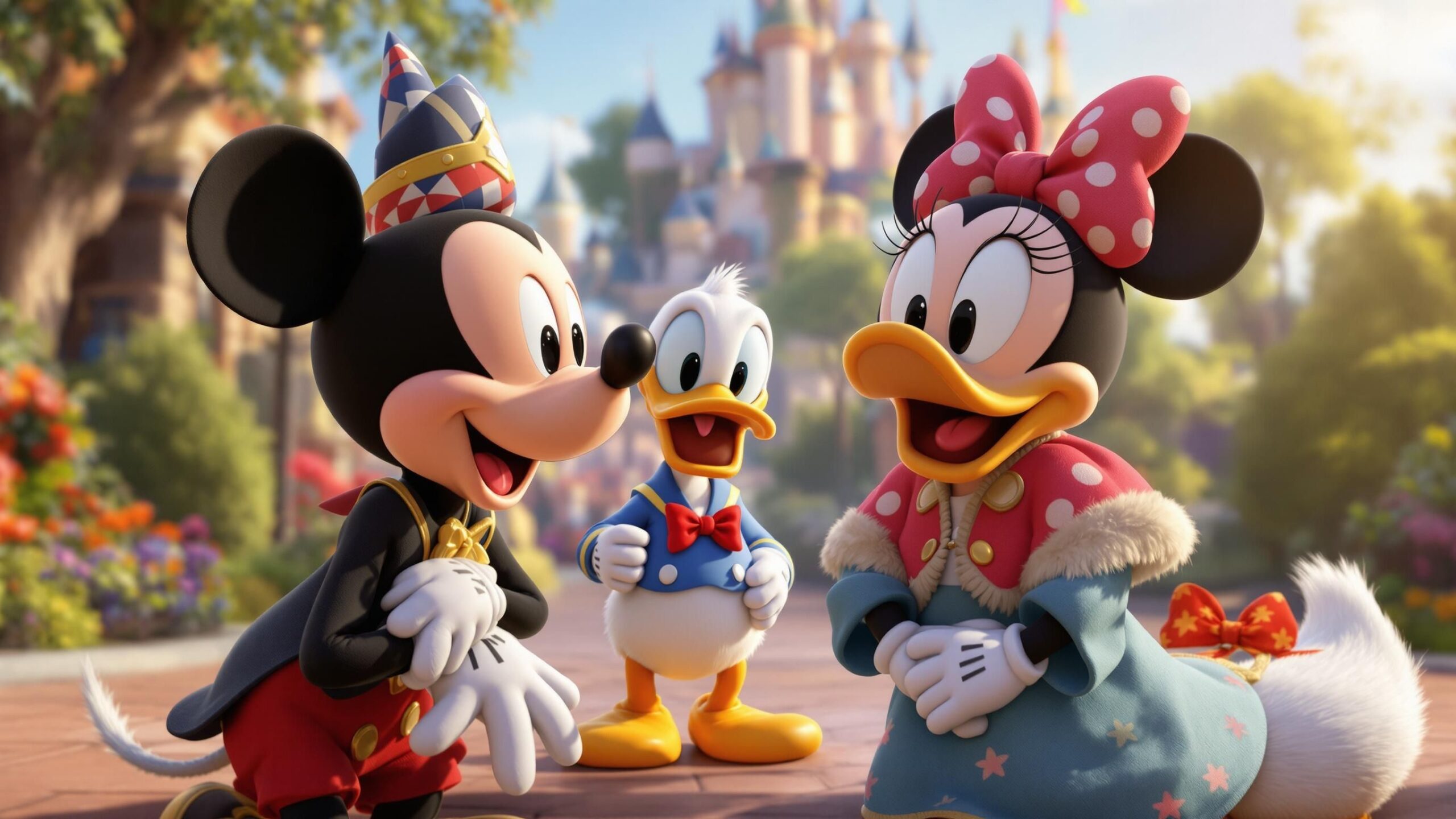There’s one question every Marvel-loving cartoon fan has probably wondered at least once: what if Phineas and Ferb—those genius stepbrothers with 104 days of summer vacation and a habit of building dimension-traveling roller coasters—joined Earth’s Mightiest Heroes? On one side, you’ve got the Avengers: superpowered, battle-hardened icons who’ve saved the world multiple times. On the other, two middle-school inventors from Danville who’ve casually built time machines, cloned dinosaurs, and turned their backyard into a functioning city. Honestly, the crossover potential is off the charts. While Phineas and Ferb may not have super strength, magical hammers, or gamma-fueled rage, they’ve got something even more dangerous—imagination, intelligence, and zero regard for the laws of physics. If S.H.I.E.L.D. ever opened their roster to child geniuses with an endless supply of gadgets and optimism, Tony Stark might just find himself out-invented. So, let’s suit up, break a few timelines, and ask the ultimate crossover question: what would happen if Phineas and Ferb joined the Avengers?
Step One: The Call to Assemble
It all begins with a portal malfunction. While testing a new trans dimensional gateway (because that’s just a regular Thursday project for these two), Phineas and Ferb accidentally open a rift to the Marvel Universe. But instead of just watching it from afar, they do what any responsible pre-teens would do—jump in without hesitation.
They land in New York City mid-Kree invasion, surrounded by panicked civilians and flying alien ships. Naturally, their first reaction isn’t fear—it’s fascination. Phineas calmly asks, “Ferb, I know what we’re going to do today,” as Ferb silently assembles a fully operational anti-Kree defense system from random scraps found in an alley. By the time Iron Man swoops in, the boys have already neutralized half the alien threat. Impressed and a little confused, Tony Stark offers them an honorary spot on the team—well, after several background checks and one very awkward HR meeting.
The Invention Arsenal Meets Stark Tech
You’d think Tony Stark, the self-proclaimed genius billionaire inventor, might be a little annoyed at two kids outperforming his lab in their spare time. But instead, he sees potential. Phineas and Ferb are invited to Avengers HQ, where they turn Stark’s lab into a summer camp for high-concept tech. Within a week, they’ve reverse-engineered the Iron Man suit into a non-combat hover scooter, built a solar-powered Quinjet shaped like a platypus, and created a new A.I. named CARL-E (modeled after their friend Carl, naturally).
Tony and Bruce Banner team up with the boys, only to realize they’re constantly three steps ahead. Ferb, using parts of Ultron’s old server, builds a non-evil AI that babysits the Hulk. Phineas asks Thor if they can try to replicate Mjolnir, just to see if gravitational polarity is transferable through dimensional physics. Thor politely declines—but admits he’s intrigued.
The real magic? Phineas and Ferb don’t see the Avengers as larger-than-life legends. They see them as cool adults with big toys—and lots of scientific potential. While the Avengers fight villains, the boys fight the limitations of science. And when those two missions combine, the results are explosive (in the best way).
Phineas and Ferb vs. Kang the Conqueror
When it comes to villains, the Avengers have faced some doozies: Thanos, Loki, Ultron. But nobody is ready for how Kang the Conqueror reacts when he meets two twelve-year-olds who can bend time just for fun. Kang’s entire thing is mastering the timeline. But Phineas and Ferb? They built a time-traveling bike before lunch. It’s safe to say, the first meeting doesn’t go well—for Kang.
In this timeline, Kang attempts to erase the boys from existence before they ever invent their first rocket. But with some help from Doctor Strange and a little improvisation from Ferb involving a slingshot and a modified Pym Particle, the duo reverse Kang’s entropy field and trap him in a time loop made entirely of reruns of Love Händel concerts.
Kang’s defeat comes not from brute force, but from the sheer unpredictability of childhood logic. You can predict a battle-hardened Avenger. You cannot predict what a pair of dimension-hopping geniuses will build just because they’re bored on a Saturday.
Nick Fury’s Worst Day Ever
From the moment he learns about them, Nick Fury is not amused. He’s spent years recruiting enhanced individuals, conducting rigorous psychological evaluations, and coordinating impossible missions across the globe. Now suddenly, two kids from the suburbs have upstaged half his roster and built a machine that makes Heli carriers obsolete.
Fury tries to debrief them. Phineas explains their interdimensional exploits with enthusiasm, while Ferb silently hacks into the S.H.I.E.L.D. database just to upgrade the UI. By the time they’re done, Fury is rubbing his temples and questioning everything. Even Maria Hill isn’t sure whether to lock them up or put them in charge.
Ultimately, Fury gives up trying to control them and just decides to let them operate under their own division: Y.A.V. (Young Avengers… Very Young). He figures they’re more powerful as allies than unpredictable wildcards. That, and he’s slightly terrified of what they might invent next.
Phineas, Ferb, and the Spider-Man Science Club
Once Spider-Man meets the boys, it’s game over for Midtown High’s science fair. Peter Parker thinks he’s smart—and he is—but Phineas and Ferb operate on a whole different level. Rather than compete, they collaborate. Together, they build a city-wide spider-drone surveillance system that actually respects privacy, a stretchy nanotech backpack that converts into a webbed glider, and a holographic Aunt May that texts Peter reminders to do his homework.
They bond over their mutual love of gadgets, science, and one-liners. Peter becomes their unofficial big brother figure, mentoring them about responsibility while also borrowing their gear for patrol. He even tries to teach them how to lie low. It doesn’t work. Phineas and Ferb can’t help it—they’re just too enthusiastic.
The three become an inseparable team, especially when faced with tech-based villains like Vulture or Mysterio. Peter provides the street-level smarts, while Phineas and Ferb provide, well, everything else.
Isabella, Baljeet, and Buford Assemble
Of course, you can’t have a Phineas and Ferb mission without their crew. Isabella joins the Avengers Initiative not as a sidekick, but as the commanding leader of the Avengers Youth Brigade. Baljeet gets a temporary internship under Bruce Banner and accidentally builds a gamma-resistant chalkboard. Buford, surprisingly, bonds with Drax from the Guardians of the Galaxy over their mutual love of punching things and complete lack of subtlety.
The gang doesn’t just support Phineas and Ferb—they evolve with the Marvel universe. Isabella leads tactical missions with military precision. Baljeet handles cosmic calculations faster than most supercomputers. And Buford? Let’s just say he and Rocket Raccoon are banned from at least three planets now. Together, the expanded squad proves that brains, brawn, and friendship are just as powerful as super serum.
Perry the Platypus vs. Hydra
And where would we be without Agent P? In this crossover universe, Perry the Platypus is an elite-level S.H.I.E.L.D. agent with his own stealth Quinjet and a vendetta against Hydra. When Baron Zemo tries to unleash a mind control virus, it’s Perry who infiltrates the fortress, disables the weapon, and escapes undetected leaving only a calling card shaped like his fedora.
He doesn’t speak. He doesn’t monologue. He just gets results. Fury respects him. Black Widow is suspicious of him. And Rocket Raccoon tries to recruit him to the Guardians more than once.
But Perry’s heart remains in Danville, protecting Phineas and Ferb from afar—even when they don’t know it. Or do they?
The Endgame-Level Crossover
Everything culminates in an epic showdown when a cosmic-level villain (let’s say Galactus, because why not?) threatens to consume Earth. The Avengers are down, the Guardians are scattered, and hope is dwindling—until a giant mechanical replica of Thor’s hammer crashes through the sky, piloted by none other than Phineas and Ferb.
They’ve built a device that channels the energy of every Infinity Stone (replicated, of course, with candy-colored isotopes found in an alternate universe). They call it the Inspiration Drive, powered not by magic or science—but by summer vacation. It activates only when kids are truly using their imagination.
The battle rages, and just when it looks like Galactus will swallow the Earth whole, Phineas hits the final switch. The sky glows with energy, portals open, and every friend they’ve made—heroes, aliens, even Doofenshmirtz with his somewhat-useful Anti-Galactus-Inator—joins the fight. The galaxy doesn’t just get saved—it gets engineered into a musical finale.
Back in Danville, Nothing’s Changed… Or Has It?
After the universe is saved, the boys return to their backyard like nothing happened. Their mom walks out with groceries and sees nothing but a patch of slightly scorched grass. “Boys, what have you been up to?” she asks.
Phineas smiles. “Just another awesome day.” Ferb nods. Perry adjusts his fedora. Cue fade to black.
The beauty of this crossover is how seamlessly it fits. The Marvel universe is full of world-saving heroes—but none quite like these. Phineas and Ferb remind us that genius isn’t always born in labs or forged by tragedy. Sometimes, it shows up in two kids with a blueprint, a toolbox, and a dream to make every day extraordinary.




